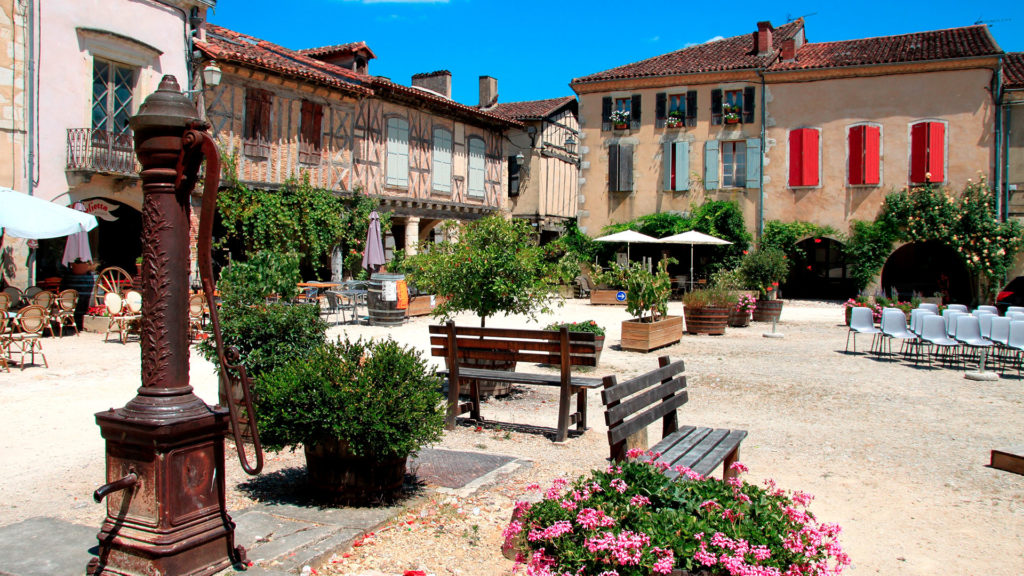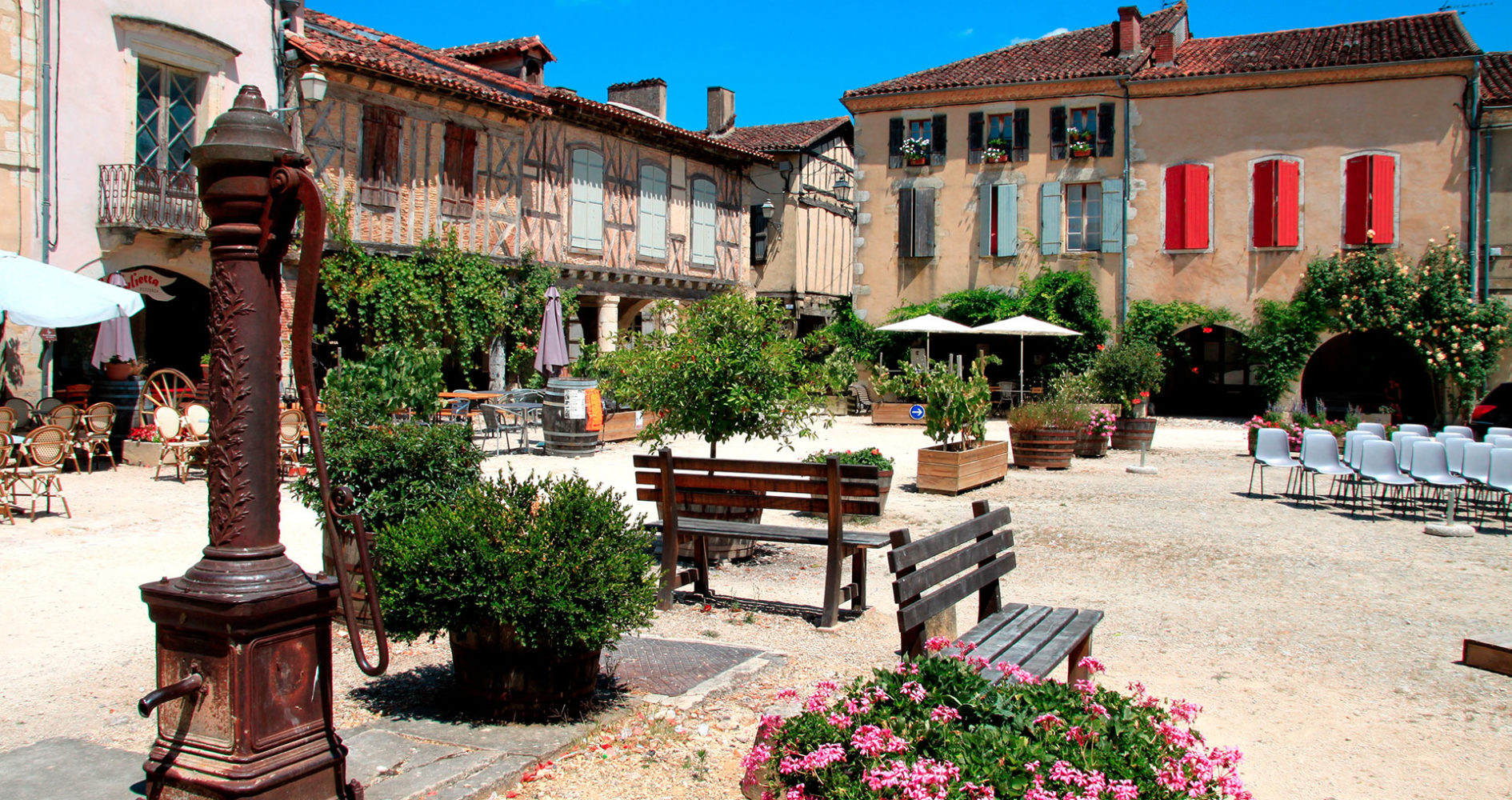Of the two million visitors to the medieval city of Carcassonne every year, how many come down to the lower town? All you have to do is cross the Pont Vieux to discover this other face of Carcassonne. Here are a few must-see places to visit in the ancient fortified bastide of Carcassonne.

The bastide Saint-Louis, Carcassonne’s second medieval town
What is Bastide Saint-Louis? Located opposite the Medieval city of Carcassonne on the left bank of theAude, Bastide Saint-Louis, also known as Ville Basse, is Carcassonne’ s “recent” urban extension. It’s also the center of the local town and the commercial heart of Carcassonne. A lively district with bustling squares, numerous boutiques, cafés, restaurants and other businesses.
Founded under Louis IX in 1260, the “new” Carcassonne was built on a quadrangular plan, flanked by bastions and organized in a checkerboard pattern around the Place Carnot. The new town grew and modernized thanks to the arrival of the Canal du Midi, which enabled the cloth industry to develop. Wealthy merchants built magnificent mansions with colorful facades.
What to do in Bastide Saint-Louis? Follow the guide!
A lively, bustling district, Bastide Saint-Louis is also a town steeped in history, where it’s a pleasure to stroll. From ancient churches and museums to picturesque cobbled streets, here are some of the bastide’s hidden treasures.
Place Carnot, the heart of Bastide
With its colourful facades and red marble red marble from Caunes-Minervois Place Carnot is the beating heart of the bastide, with the imposing Neptune fountain at its center. The area is particularly rich in bistros and restaurants. On Saturday mornings, market day, the square comes alive.
Courtejaire Street
Rue Courtejaire is Carcassonne ‘s main pedestrian shopping street. A great opportunity to do a little window-shopping! Look up, too, at the facades of 17th and 18th century townhouses. You’ll see beautiful gargoyles, mullioned windows and sculpted dormers. Opening onto rue Courtejaire, the Portail des Jacobins is the last vestige of the four gates and ramparts that once surrounded the lower town.
Carcassonne Museum of Fine Arts
Housed in the former Présidial, opposite Square Gambetta, Carcassonne ‘s Musée des Beaux-Arts presents centuries of art and history, with works by Brueghel, Ingres, Corot and Courbet. (Free admission).
Saint-Michel Cathedral
Erected as a cathedral in the early 19th century,Saint-Michel church is one of the most emblematic buildings in the Bastide of Carcassonne, with its monster-headed gargoyles. Inside, beautiful 14th-century stained glass windows and a magnificent Cavaillé-Coll organ.
Saint Vincent Church
With its exposed roof frame,Saint Vincent church is one of the largest buildings in the Southern Gothic style. The climb up the 232 steps to the bell tower is rewarded with a unique view of the bastide and medieval town.
The House of Memories
In a former 16th-century mansion known as the “house of a hundred windows”, the Maison des Mémoires invites you to discover the extraordinary and tragic story of Aude surrealist poet Joë Bousquet. A collection of personal effects, clothes, souvenirs and medals of veterans from 1870 to the Algerian War, plus a fine regional library that will delight specialists. What’s more, admission is free!
Squares and gardens for picnics in the city
Between two visits to the old lower town, treat yourself to a green break. Numerous squares and gardens are scattered throughout the neighborhood. At the entrance to the bastide, just a stone’s throw from the Tourist Office, the Square Gambetta is the perfect place to spend a pleasant moment with the kids or take a lunch break in the sunshine. There are hundreds of roses, a water mirror, bronze sculptures, a carousel and a gourmet kiosk. Also worth a visit is the Calvaire garden, set within its imposing walls.
Why not take a guided cruise on the Canal du Midi?
From the port of Carcassonne, take a guided tour on the Canal du Midi . The Hélios, Lou Gabaret and Cocagne panoramic boats offer breathtaking views of the medieval town, and sail from the Fresquel canal bridge to the Lalande double lock.


